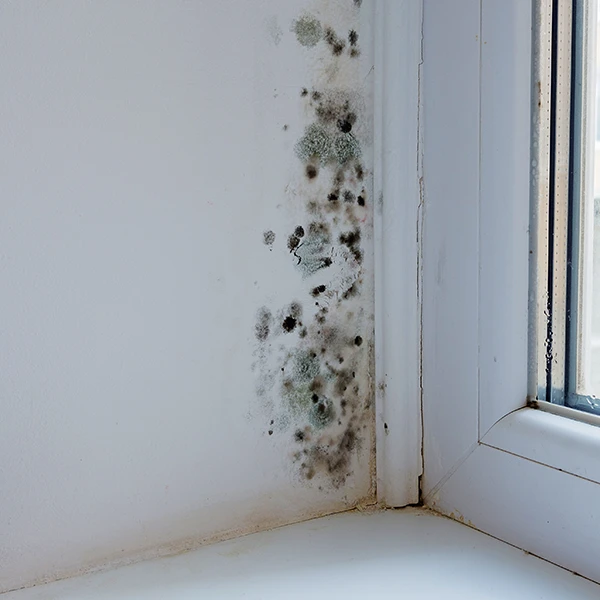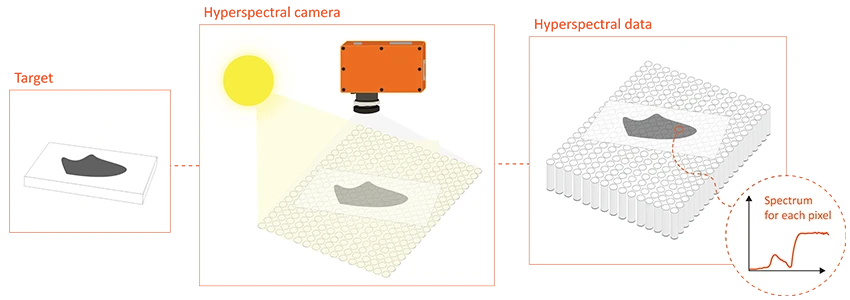Hyperspectral Imaging: The Future of Fungal Growth Detection in Building Materials

Fungal growth on building materials is a hidden menace as it can silently deteriorate building materials, compromising their strength and durability. Beyond material damage, it can also pose serious health risks to individuals living or working within the affected spaces. By promptly identifying and addressing fungal growth, costly damage and potential health hazards can be avoided.
Methods for Detecting Fungal on Building Materials
Due to the hidden nature of fungal growth in construction cavities, traditional approaches such as microscopic examination, culturing, or enzyme-based methods typically require collecting and destroying samples. However, it’s worth noting that technology and scientific methods continue to evolve, and many new tools and techniques have emerged. One such example is the hyperspectral imaging camera, which provides a non-destructive and rapid alternative for detecting fungal growth on building materials.
How Hyperspectral Imaging Cameras Work
Hyperspectral imaging cameras harness the principles of spectroscopy to extract spectral information and merge it with traditional imaging, resulting in a formidable tool with diverse applications in scientific, industrial, and research domains. Unlike traditional spectroscopy, which merely measures the amount of light at different wavelengths, hyperspectral cameras capture a sequence of images, each focusing on a narrow spectral band. These images are then combined to form a data cube, with two spatial dimensions and one spectral dimension. By utilizing this three-dimensional data, hyperspectral cameras provide a complete picture of the scene or material, including its spatial features and unique spectral signatures.

Illustrative example of how hyperspectral imaging camera work
Use of Hyperspectral Imaging Cameras for Fungal Detection on Building Materials
Hyperspectral imaging has been utilized to detect fungal growth on building materials, including wood, as demonstrated by Burud et al. (2015). This process involves data acquisition through a hyperspectral camera, proper illumination, and scanning or imaging of the building material’s surface across various wavelength regions, like visible or infrared. The collected data is processed to create a data cube, and spectral analysis is performed to identify unique spectral signatures associated with fungal composition. Machine learning algorithms can then classify regions within the hyperspectral image as either fungal-infested or not.
Specim Hyperspectral Imaging Cameras
Specim, a member of the Konica Minolta group, is a leading hyperspectral imaging solutions provider with a wide selection of hyperspectral imaging cameras widely used across various fields of research and industrial applications like agriculture, food, medical science, art conservation, etc. Among their notable hyperspectral imaging cameras is the Specim IQ, known for its user-friendly design and versatility, making it suitable for a wide range of applications, including the detection of fungal growth on building materials. In a study conducted by the Danish Technological Institute, the Specim IQ was utilized to detect fungal growth on gypsum boards, specifically targeting three different fungal species: Aspergillus niger, Penicillium rubens, and Trichoderma viride.
With its portable design and real-time hyperspectral capabilities, the Specim IQ enables easy hyperspectral imaging measurement and analysis in both laboratory and on-site environments. Check out this video to learn more about the functionality of the Specim IQ.
If you’re looking for more information on Specim’s hyperspectral imaging cameras and solutions, or if you need guidance in finding the perfect hyperspectral imaging solutions for your research or industrial applications, don’t hesitate to get in touch with us for a free consultation.
